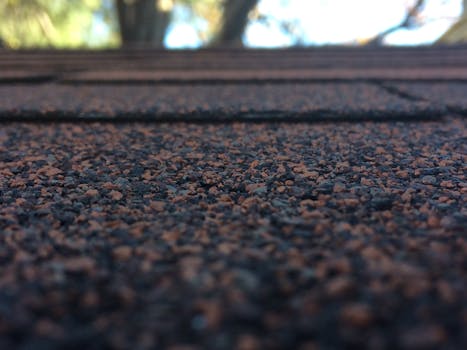
The roof is a critical component of the home. Asphalt shingle roofs are generally the most common roofing material in the U.S., accounting for nearly 75% of all roofs. This article will focus on the lifespan of asphalt shingle roofs, exploring how long they last, factors that affect their longevity, and why homeowners in Washington State need to be especially mindful of weather conditions that can impact their roof’s lifespan.
The Lifespan of Asphalt Shingle Roofs
On average, an asphalt shingle roof lasts between 15 to 25 years, and in some cases 30 years. The exact lifespan, however, can vary depending on several factors, including the quality of the shingles, the installation process, and the local climate. Asphalt shingles are popular because they are relatively affordable, easy to install, and come in a variety of styles. Homeowners need to understanding the factors that influence their durability, especially homeowners in Washington State, where weather conditions play a significant role.
The Impact of Weather on Asphalt Shingle Roofs in Washington State

Washington State’s weather is notorious for its frequent rain and cloudy days, which can have a major impact on the lifespan of your asphalt roof. The state’s wet and humid climate for a large part of the year, particularly in the coastal areas with including cities like Seattle, Olympia, Tacoma, and Bellingham along with others leads to above average moisture exposure. These conditions can accelerate the aging process of asphalt shingles. Over time, the constant exposure to rain, combined with the high humidity, can cause shingles to lose their granules and weaken, making them more susceptible to leaks and damage.
On the other hand, areas in Washington State that receive more sunlight, such as in eastern Washington, can experience different roofing challenges. The harsh sun, particularly in the summer months, can cause asphalt shingles to dry out and crack. When shingles become brittle from prolonged sun exposure, they may begin to curl or break off more easily, further reducing their effectiveness in protecting your home.
Both excessive rain and prolonged sun exposure can significantly reduce the life of your asphalt shingle roof, making it essential to regularly inspect your roof and take preventative measures to extend its lifespan.
Factors Affecting the Lifespan of Asphalt Shingle Roofs
In addition to weather, several other factors can affect how long your asphalt shingle roof lasts:
- Roof Maintenance: Regular maintenance, such as cleaning gutters, removing debris, and checking for damaged shingles, can help extend the life of your roof. Keeping the roof free from moss and algae, common issues in Washington’s moist climate, is also important for maintaining shingles’ integrity.
- Quality of Installation: A roof installed installed by licensed roofing contractor will typically last longer than one installed as DIY, or by a contractor with unknown status. Poor installation can lead to issues such as loose shingles or improper sealing, which can shorten the lifespan of the roof.
- Roof Ventilation: Proper ventilation in the attic helps regulate temperature and moisture levels, preventing damage from excessive heat or moisture buildup. Poor ventilation can lead to early deterioration of your shingles.
- Roof Slope: Homes with steeper roof slopes generally have roofs that last longer since water drains off more easily. Roofs that are too flat may allow water to pool, leading to quicker wear and tear.
Signs That Your Asphalt Shingle Roof Needs Replacement
Even with proper care, your asphalt roof will eventually need to be replaced. Some signs that your roof may be nearing the end of its lifespan include:
- Missing or curled shingles
- Granule loss (visible as black or sometimes whites patches on your roof)
- Discoloration or possible stains on your ceiling
- Moss or algae growth (particularly common in Washington’s rainy regions)
If you notice any of these issues, it’s time to consult an inspector or roofing professional who can assess the condition of your roof and determine whether repairs or a full replacement are necessary.
Conclusion
Asphalt shingle roofs typically last 15 to 25 years, but the lifespan can be significantly affected by local climate conditions. In Washington State, where both excessive rain and sun exposure are common, the lifespan of your asphalt roof may be shorter due to the combined wear and tear from moisture and UV rays. Regular roof maintenance, proper installation, and good ventilation can help extend the life of your roof and protect your home for years to come.
If you’re a homeowner in Washington, it’s important to consider the unique weather conditions when planning for roof maintenance or replacement. For more information on roofing services in Washington State, visit Washington State Department of Labor and Industries for certified roofing professionals and guidelines. You can also check out Roofing Contractors Association of Washington for further insights into quality roofing contractors in your area.
For tips on how to maintain your roof and understand its needs, visit The National Roofing Contractors Association.
